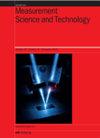A step-by-step parameter-adaptive FMD method and its application in fault diagnosis
IF 3.4
3区 工程技术
Q1 ENGINEERING, MULTIDISCIPLINARY
引用次数: 0
Abstract
A newly proposed method, Feature Mode Decomposition (FMD), can effectively enhance signal features while decomposing the signal. This feature is beneficial for analyzing weak vibration signals. However, input parameters (the segment number K, the filter length L, and the mode number n,) significantly influence the decomposition performance and efficiency. Based on the analysis of filter properties and decomposition performance of the FMD method, a step-by-step parameter-adaptive FMD method is proposed. First, parameters K and L are optimized; Secondly, parameter n is determined. In addition, a comprehensive evaluation indicator, the ratio of sample entropy and ensemble kurtosis (SEKR) is constructed considering both the periodic impact characteristics of fault signals and the noise intensity to created objective functions for each step. Compared with the methods of Variational Mode Decomposition (VMD) spectral kurtosis method and the wavelet packet(WP) decomposition, the proposed method exhibits better decomposition performance: the amplitude has increased by nearly 10 times for the simulation data and 6 times for the actual engineering data; and three evaluation factors (the crest factor, the impulse factor, and the kurtosis) have higher value. Therefore, it can be concluded that the proposed method has better superiority in identifying weak periodic fault features.逐步参数自适应 FMD 方法及其在故障诊断中的应用
一种新提出的方法--特征模式分解(FMD)--可以在分解信号的同时有效增强信号特征。这一特征有利于分析微弱的振动信号。然而,输入参数(段数 K、滤波器长度 L 和模式数 n)对分解性能和效率有很大影响。在分析滤波器特性和 FMD 方法分解性能的基础上,提出了一种分步参数自适应 FMD 方法。首先,优化参数 K 和 L;其次,确定参数 n。此外,考虑到故障信号的周期性影响特征和噪声强度,构建了一个综合评价指标--样本熵与集合峰度之比(SEKR),以创建每一步的目标函数。与变异模态分解(VMD)频谱峰度法和小波包(WP)分解法相比,所提出的方法表现出更好的分解性能:模拟数据的振幅提高了近 10 倍,实际工程数据的振幅提高了 6 倍;三个评价因子(波峰因子、脉冲因子和峰度)的值更高。因此,可以认为所提出的方法在识别弱周期性故障特征方面具有更好的优越性。
本文章由计算机程序翻译,如有差异,请以英文原文为准。
求助全文
约1分钟内获得全文
求助全文
来源期刊

Measurement Science and Technology
工程技术-工程:综合
CiteScore
4.30
自引率
16.70%
发文量
656
审稿时长
4.9 months
期刊介绍:
Measurement Science and Technology publishes articles on new measurement techniques and associated instrumentation. Papers that describe experiments must represent an advance in measurement science or measurement technique rather than the application of established experimental technique. Bearing in mind the multidisciplinary nature of the journal, authors must provide an introduction to their work that makes clear the novelty, significance, broader relevance of their work in a measurement context and relevance to the readership of Measurement Science and Technology. All submitted articles should contain consideration of the uncertainty, precision and/or accuracy of the measurements presented.
Subject coverage includes the theory, practice and application of measurement in physics, chemistry, engineering and the environmental and life sciences from inception to commercial exploitation. Publications in the journal should emphasize the novelty of reported methods, characterize them and demonstrate their performance using examples or applications.
 求助内容:
求助内容: 应助结果提醒方式:
应助结果提醒方式:


